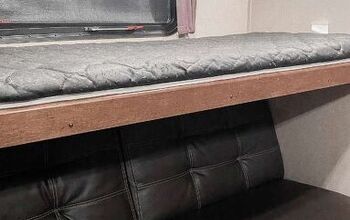How to Save $10000 in a Year (9 Clever Ways)

How to save $10000 in a year
Gaining financial freedom is a common goal as it means living with a sense of security and less financial burden. However, with the spiraling cost of the commodities, both basic and non-basic needs will make us ponder if it is still possible to save money.
Targeting the figure of $10,000 in savings in a year may sound illusionary given your current savings rate and financial situation.
However, our financial troubles are all the more reason to aim high when it comes to setting aside money. We must have protection for when we face emergencies and unplanned expenses to avoid digging ourselves deeper into debt or failing to reach our goals.
If you ever need quick money to pay for an unexpected cost, you’ll rest easy knowing you already have it set aside.
Money can’t buy happiness, but it can improve your quality of life. Savings will provide you with less financial burden when you face tough times, such as losing your job as many have throughout the ongoing COVID-19 pandemic.
That’s why, more so than your income, how much you save is an effective indicator of how wealthy you truly are.
With that in mind, no matter how much you are currently earning, you still have the potential to start saving more. There are different ways to trim down your spending, which entails carefully analyzing your budget items and deciding which ones to prioritize.
The more you decrease and remove unnecessary items from your budget, the more that you will have excess money to save.
Before you set aside the excess money for your savings, you must make sure that you have not overlooked important financial responsibilities like paying your consumer debt, credit cards, vehicle loans, and the like, especially if these loans bear interest.
You can also supplement squeezing savings out of your budget by looking for additional sources from which you can earn money.
If you have your mind set on saving $10,000 this year, then you will need a plan for how you will achieve your savings goal. It requires certain tactics, sacrifice, and a strong sense of self-control. Once you set your goal, you will have to resist temptation from making some detours and making excuses to spend.
9 Clever ways on how to save $10000 in a yearLet’s walk through some of the proven ways of how to save effectively:
Assess your monthly expenses
Before you can improve your financial situation and start saving, you need to make a quick assessment as to your “average” monthly expenses. You need to spend your money on these things, such as payment for the mortgage loan, car, etc.
The logged data from your credit card and checking account may greatly help you determine the amount of money you are shelling out per month. You can calculate your average monthly spending by adding up all of your expenses for the last six months and divide the figure by six.
The result will be the average expenses that you are incurring for each month.
Make a savings goal
By summing up all the expenses that you are incurring in a month, you will be able to set your goal as to the amount that you want to save, as well as the corresponding timeline of which you think you will be able to attain such a goal.
If what you have in mind is to save a figure of $10,000 in a year, then you will have to save at least approximately $834 each month. Take your income and subtract it by both your average expenses and your monthly savings goal.
If the result is greater than $0, then you can maintain your current budget plan and reach your savings goal. If the result is negative, then you will have to reevaluate your budget and make some allowances.
Create new sources of income
To improve your financial situation, there are two main, accessible routes you can take. You can save money by trimming your expenses, or you can locate additional sources of income (or both!). The more you earn, the more you can save.
You can squeeze some of the income-generating activities in your work, or you can monetize your skills or your hobby. Consider freelancing on the side of your full-time work. You can look into working online; there are countless virtual jobs that may align with your skillset. Common online roles include virtual assistants, writers, editors, transcriptionists, social media managers, and more. Alternatively, you can turn your hobby, like painting, jewelry-making, gardening, or baking, into a profitable side hustle.
Create a plan
You need to have a realistic plan on how you can effectively save and stick to it. If you feel that you are stuck in your current financial situation, a detailed, written-out plan will give you the clarity and confidence to make changes.
Consider everything from your income and expenses to your potential for reducing your budget and increasing your earnings. The goal is to create an easy-to-follow plan that will help shape and improve your spending and saving habits.
Make a promise to yourself
The plan that you have created can only be possible if you set a promise to yourself that you are going to prioritize your financial goals. To attain the $10,000 savings target, you need to stick to the things that you listed in your plan diligently.
Many people find that writing down their goals or sharing them with friends and family helps them stay on track. If you have trouble holding yourself accountable, look to others you trust to encourage you to stay on the right path.
Set a “pay yourself first” rule
Rather than spending your paycheck as soon as it hits your checking account, send it directly to savings. You can automate your earnings so that a certain amount goes directly to savings each month (or however frequently you get paid).
Logically, if you don’t have cash on hand, you will not be tempted to spend it. When the money goes to your savings account, you won’t see it as money that is free to be spent. Moreover, you’re likely less willing to withdraw cash from your savings account vs. your checking account.
This rule is reflective of zero-based budgeting in which every dollar of your income is assigned a “role”. Assign a consistent monthly amount to savings and then pay yourself, or your savings, that money as soon as you receive it.
Mindful spending
As Benjamin Franklin said, “a small leak will sink a great ship,” so be mindful of your spending habits. Little expenses can add up in big ways.
Part of budgeting is itemizing your spending so that you know how much you have allocated to spend on individual categories like groceries, dining out, and entertainment. If you stray from your budget and go over these amounts, you’ll struggle to reach your goals and keep your finances in check.
Your policy must be savings first before spending. You will already have the necessary money distributed to your savings, and the money that is left in your pocket is the money that you are allowed to spend without disrupting your financial goals.
Make an investment that bears interest
The easiest way to save is to increase the power of your money by having it invested in an account with compound interest. Instead of having an account that lets your money remain stagnant, having it in an account that bears interest will increase the value of your dollars.
To demonstrate, let’s look at a 10% return on $10,000, which equals $1,000. You will have earned an extra $1,00 without putting in any effort to earn it. The longer that you keep the money in your account, the more you will gain. Utilizing compound interest is a simple way to increase your savings without making additional financial sacrifices.
Make your financial map
A financial map will be your guide to financial freedom. It will help you visualize where you are, where you want to go financially, and all the steps in between that will help you get there.
If you are still young, you may have more time and therefore more flexibility between your starting point and your ending point. Conversely, if you are older or want to reach your ultimate goal faster, then you will have to develop a more aggressive plan, potentially making more sacrifices while acting on an accelerated timeline.
Ready to save $10000 a year?
While $10,000 may seem like a daunting figure when you’re starting at $0, there are clear, actionable steps you can take to reach this savings goal. All you will need is a solid game plan, strong habits, and the diligence to make it happen.
This post is written by Samantha Hawrylack:
Samantha uses her BS in Finance and MBA to help others control their finances through budgeting, saving, investing, side hustles, and travel hacking. Due to following the FIRE Movement’s principles, she was able to quit her high-stress job in the financial services industry in July 2019 to pursue her side hustles. She is now a full-time entrepreneur, freelancing coach and blogger.
How to save $10000 in a year
Hi, I'm Anika. With my majors in Accounting and Finance, I'm here to empower people by sharing the simple and actionable money management and money-saving tips to live a debt-free financially independent life. I have been featured on popular websites like Bankrate and Authority Magazine.






















Comments
Join the conversation
Please let me know where I can find a 10% rate and what investments are compounding interest